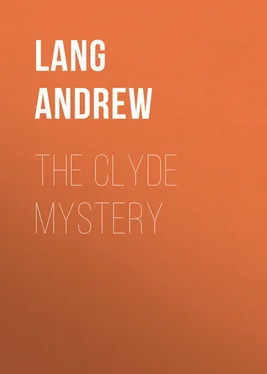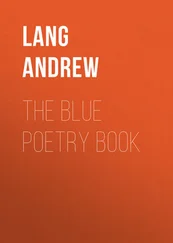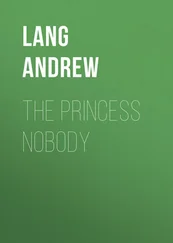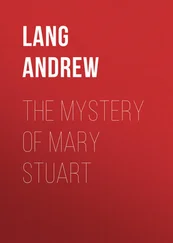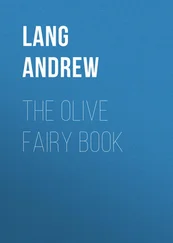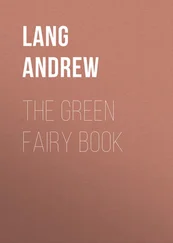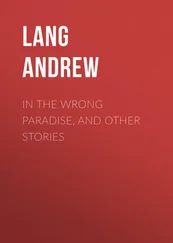Andrew Lang - The Clyde Mystery
Здесь есть возможность читать онлайн «Andrew Lang - The Clyde Mystery» — ознакомительный отрывок электронной книги совершенно бесплатно, а после прочтения отрывка купить полную версию. В некоторых случаях можно слушать аудио, скачать через торрент в формате fb2 и присутствует краткое содержание. Жанр: foreign_antique, foreign_prose, на английском языке. Описание произведения, (предисловие) а так же отзывы посетителей доступны на портале библиотеки ЛибКат.
- Название:The Clyde Mystery
- Автор:
- Жанр:
- Год:неизвестен
- ISBN:нет данных
- Рейтинг книги:4 / 5. Голосов: 1
-
Избранное:Добавить в избранное
- Отзывы:
-
Ваша оценка:
- 80
- 1
- 2
- 3
- 4
- 5
The Clyde Mystery: краткое содержание, описание и аннотация
Предлагаем к чтению аннотацию, описание, краткое содержание или предисловие (зависит от того, что написал сам автор книги «The Clyde Mystery»). Если вы не нашли необходимую информацию о книге — напишите в комментариях, мы постараемся отыскать её.
The Clyde Mystery — читать онлайн ознакомительный отрывок
Ниже представлен текст книги, разбитый по страницам. Система сохранения места последней прочитанной страницы, позволяет с удобством читать онлайн бесплатно книгу «The Clyde Mystery», без необходимости каждый раз заново искать на чём Вы остановились. Поставьте закладку, и сможете в любой момент перейти на страницу, на которой закончили чтение.
Интервал:
Закладка:
Andrew Lang
The Clyde Mystery a Study in Forgeries and Folklore
PREFACE
The author would scarcely have penned this little specimen of what Scott called “antiquarian old womanries,” but for the interest which he takes in the universally diffused archaic patterns on rocks and stones, which offer a singular proof of the identity of the working of the human mind. Anthropology and folklore are the natural companions and aids of prehistoric and proto-historic archaeology, and suggest remarks which may not be valueless, whatever view we may take of the disputed objects from the Clyde sites.
While only an open verdict on these objects is at present within the competence of science, the author, speaking for himself, must record his private opinion that, as a rule, they are ancient though anomalous. He cannot pretend to certainty as to whether the upper parts of the marine structures were throughout built of stone, as in Dr. Munro’s theory, which is used as the fundamental assumption in this book; or whether they were of wood, as in the hypothesis of Mr. Donnelly, illustrated by him in the Glasgow Evening Times (Sept. 11, 1905). The point seems unessential. The author learns from Mr. Donnelly that experiments in shaping piles with an ancient stone axe have been made by Mr. Joseph Downes, of Irvine, as by Monsieur Hippolyte Müller in France, with similar results, a fact which should have been mentioned in the book. It appears too, that a fragment of fallow deer horn at Dumbuck, mentioned by Dr. Munro, turned out to be “a decayed humerus of the Bos Longifrons ,” and therefore no evidence as to date, as post-Roman.
Mr. Donnelly also protests that his records of his excavations “were exceptionally complete,” and that he “took daily notes and sketches of all features and finds with measurements.” I must mention these facts, as, in the book, I say that Mr. Donnelly “kept no minute and hourly dated log book of his explorations, with full details as to the precise positions of the objects discovered.”
If in any respect I have misconceived the facts and arguments, I trust that the fault will be ascribed to nothing worse than human fallibility.
I have to thank Mr. Donnelly for permission to photograph some objects from Dumbuck and for much information.
To Dr. Munro, apart from his most valuable books of crannog lore, I owe his kind attention to my private inquiries, and hope that I successfully represent his position and arguments. It is quite undeniable that the disputed objects are most anomalous as far as our present knowledge goes, and I do not think that science can give more than all I plead for, an open verdict. Dr. Ricardo Severe generously permitted me to reproduce a few (by no means the most singular) of his designs and photographs of the disputed Portuguese objects. A serious illness has prevented him from making a visit recently to the scene of the discoveries (see his paper in Portugalia , vol. ii., part 1). I trust that Dr. de Vasconcellos, from whom I have not yet heard, will pardon the reproduction of three or four figures from his Religiões , an important work on prehistoric Portugal.
To Dr. Joseph Anderson, of the National Museum, I owe much gratitude for information, and for his great kindness in superintending the photographing of some objects now in that Museum.
Dr. David Murray obliged me by much information as to the early navigation of the Clyde, and the alterations made in the bed of the river. To Mr. David Boyle, Ontario, I owe the knowledge of Red Indian magic stones parallel to the perforated and inscribed stone from Tappock.
As I have quoted from Dr. Munro the humorous tale of the palaeolithic designs which deceived M. Lartet and Mr. Christie, I ought to observe that, in L’Anthropologie , August, 1905, a reviewer of Dr. Munro’s book, Prof. Boule, expresses some doubt as to the authenticity of the historiette .
I – THE CLYDE MYSTERY
The reader who desires to be hopelessly perplexed, may desert the contemplation of the Fiscal Question, and turn his eyes upon The Mystery of the Clyde . “Popular” this puzzle cannot be, for there is no “demmed demp disagreeable body” in the Mystery. No such object was found in Clyde, near Dumbarton, but a set of odd and inexpensive looking, yet profoundly enigmatic scraps of stone, bone, slate, horn and so forth, were discovered and now repose in a glass case at the National Museum in Queen Street, Edinburgh.
There, as in the Morgue, lies awaiting explanation the corpus delicti of the Clyde Mystery. We stare at it and ask what are these slate spear heads engraved with rude ornament, and certainly never meant to be used as “lethal weapons”? What are these many-shaped perforated plaques of slate, shale, and schist, scratched with some of the old mysterious patterns that, in almost every part of the world, remain inscribed on slabs and faces of rock? Who incised similar patterns on the oyster-shells, some old and local, some fresh — and American ! Why did any one scratch them? What is the meaning, if meaning there be, of the broken figurines or stone “dolls”? They have been styled “totems” by persons who do not know the meaning of the word “totem,” which merely denotes the natural object, – usually a plant or animal, – after which sets of kinsfolk are named among certain savage tribes. Let us call the little figures “figurines,” for that commits us to nothing.
Then there are grotesque human heads, carved in stone; bits of sandstone, marked with patterns, and so forth. Mixed with these are the common rude appliances, quern stones for grinding grain; stone hammers, stone polishers, cut antlers of deer, pointed bones, such as rude peoples did actually use, in early Britain, and may have retained into the early middle ages, say 400-700 a. d.
This mixed set of objects, plus the sites in which they were found, and a huge canoe, 35 feet long, is the material part of the Clyde Mystery. The querns and canoe and stone-polishers, and bones, and horns are commonly found, we say, in dwellings of about 400-700 a. d. The peculiar and enigmatic things are not elsewhere known to Scottish antiquaries. How did the two sets of objects come to be all mixed up together, in an old hill fort, at Dunbuie on Clyde; and among the wooden foundations of two mysterious structures, excavated in the mud of the Clyde estuary at Dumbuck and Langbank, near Dumbarton? They were dug up between 1896 and 1902.
This is the question which has been debated, mainly in newspaper controversy, for nearly ten years. A most rambling controversy it has been, casting its feelers as far as central Australia, in space, and as far back as, say, 1200 b. c. in time.
Either the disputed objects at the Museum are actual relics of life lived in the Clyde basin many centuries ago; or the discoverers and excavators of the old sites are dogged by a forger who “dumps down” false relics of kinds unknown to Scottish antiquaries; or some of the unfamiliar objects are really old, while others are jocose imitations of these, or – there is some other explanation!
The modern “Clyde artists” are credited by Dr. Robert Munro with “some practical artistic skill,” and some acquaintance with the very old and mysterious designs on great rocks among the neighbouring hills. 1 1 Archaeology and False Antiquities , pp. 259-261. By Robert Munro, M.A., M.D., LL.D., F.R.S.E., F.S.A.Scot. Methuen & Co., London, 1905.
What man of artistic skill, no conscience, and a knowledge of archaic patterns is associated with the Clyde?
The “faker” is not the mere mischievous wag of the farm-house or the country shop. It is possible that a few “interpolations” of false objects have been made by another and less expert hand, but the weight of the problem rests on these alternatives, – the disputed relics which were found are mainly genuine, though unfamiliar; or a forger not destitute of skill and knowledge has invented and executed them – or – there is some other explanation.
Читать дальшеИнтервал:
Закладка:
Похожие книги на «The Clyde Mystery»
Представляем Вашему вниманию похожие книги на «The Clyde Mystery» списком для выбора. Мы отобрали схожую по названию и смыслу литературу в надежде предоставить читателям больше вариантов отыскать новые, интересные, ещё непрочитанные произведения.
Обсуждение, отзывы о книге «The Clyde Mystery» и просто собственные мнения читателей. Оставьте ваши комментарии, напишите, что Вы думаете о произведении, его смысле или главных героях. Укажите что конкретно понравилось, а что нет, и почему Вы так считаете.
